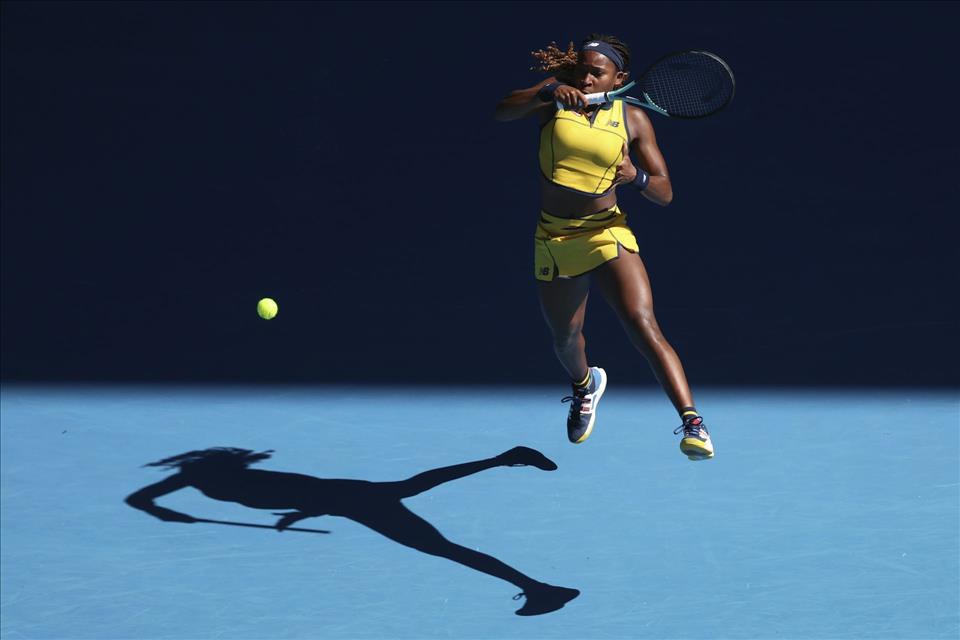
Game, Set, Debate: Why Do Women Only Play 3 Sets In Tennis?
The Australian Open is one of four annual Grand Slam events, alongside the French Open, Wimbledon and US Open, which bring together the world's best men's and women's players.
These athletes strive to claim not just the championship trophy, but precious ranking points as well as huge pay cheques: this year's Australian Open prize pool is $A96.5 million and winners of the men's and women's singles events will each take home $3.5 million .
Why though, are the lengths of the men's (five sets) and women's (three sets) matches different?
Debating the differencesThere has been long-standing debate about the appropriate length of men's and women's tennis matches.
In Grand Slam events, men's matches extend to five sets, while women's matches remain best-of-three. In most other tournaments, men and women both play best-of-three sets.
This difference is often raised when assessing equal prize money at some events, with some arguing women should not be awarded equal prize money if they play shorter matches.
Women are paid equally at all the Grand Slam tournaments but not all lower-level events .
Luckily, tennis prize money isn't based on an hourly wage system – that's why women don't get less for dominating their opponents in two sets.
But what if the women played best-of-five?
Women's history with five-set tennisWomen competed in best-of-five matches more than 130 years ago.
The United States' national championships from 1891 to 1901 featured five set matches for women. The New York Times described the 1891 clash between Mabel Cahill and Ellen Roosevelt as being:“fought to the end with wonderful tenacity”.
But these women's matches were shortened to best of three sets in 1901 by the United States National Lawn Tennis Association Council – a body made up entirely of men.
The decision was made despite the demonstrated ability for women to play five set matches, and does seem to parallel similar examples of men deciding with no evidence that women are not suited for sport of a particular nature.
This mindset led to the nearly 50-year ban of women playing soccer from 1921 to 1970.
In athletics, women were banned from competing in the 800-metre race from 1928 until 1960 , at least partially because the media seemed shocked that in the 1928 Olympic Games in Amsterdam, some women fell to the ground in exhaustion after sprinting for gold in the 800-metre event.
It took until 1967 before the first woman ran the Boston Marathon – and Kathrine Switzer had to do so covertly , battling men trying to push her off the course. But her efforts led to the inclusion of the women's marathon to the Olympics in 1984.
Back to tennis.
In 1984, the Women's Tennis Association final featured a best-of-five set format from 1984 to 1998 , famously highlighted by the decider between Monica Seles and Gabriela Sabatini in 1990 at Madison Square Garden.
Then in 1994, the Australian Open briefly considered introducing best-of-five finals for women, which would have been the first Grand Slam to do so .
Supporters of the move believed it would provide a more complete test of skill and endurance, and offer a more compelling spectacle. However, the experiment did not go forward.
Women can push the limits of physiologyThe preparation and recovery management of women in tennis has improved further from when the Australian Open proposed“the experiment” in 1994.
But it should have never been a question of whether the physiology of women could handle longer events.
In fact, evidence supports women might be built for it. From marathon records continuing to fall to women excelling in ultra-endurance events , the longer the event, the better they perform.
So maybe the stamina needed for a best-of-five sets is ideal for women.
Read more: The longer the race, the closer it gets: women are closing in on men when it comes to ultra-endurance events
Reframing the question: are best-of-five sets better?While society debates whether women should play five sets, a better question may be: do five sets achieve the best outcome for all players and fans in the age of shorter format versions of sports ?
During five-set matches, evidence shows aspects of performance can plateau in the middle stages – first serve velocity has a parabolic approach, meaning servers hold back during the middle sets.
This is likely the athlete conserving energy, often leading to a less dynamic contest in the middle stages in preparation for the“last set”, raising the question of whether men should actually only play best-of-three sets .
Tennis fans will likely continue to debate the value of those third and fourth sets from the perspective of attention span versus tradition.
What is undeniable is that men have the opportunity to showcase their mental strength and stamina in best-of-five matches.
Why aren't all players given this opportunity?

Legal Disclaimer:
MENAFN provides the information “as is” without warranty of any kind. We do not accept any responsibility or liability for the accuracy, content, images, videos, licenses, completeness, legality, or reliability of the information contained in this article. If you have any complaints or copyright issues related to this article, kindly contact the provider above.






















Comments
No comment